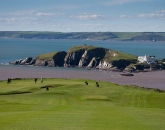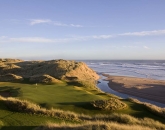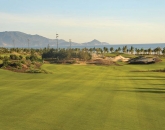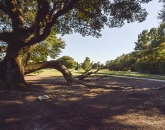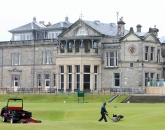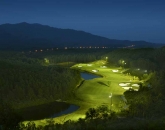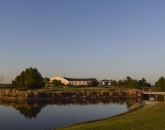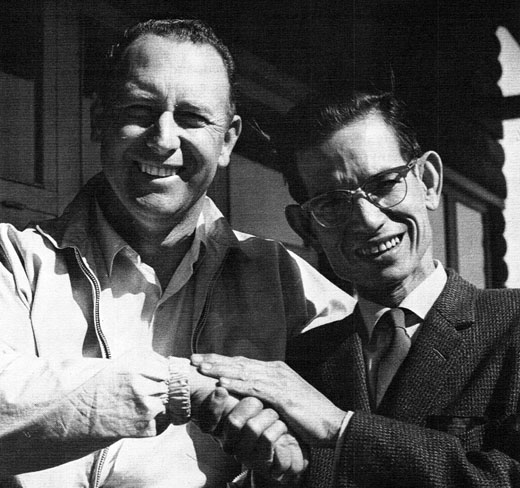 A Champion in Dalat
A Champion in Dalat
That didn’t stop Billy Casper from playing a round in Dalat. In early 1966, several months before he beat Arnold Palmer to win the U.S. Open at San Francisco’s Olympic Club, Casper played the course on a tour of Vietnam organized by the U.S. State Department.
“In Dalat, the course looked like it was just carved out of the dirt,” Casper said in a 2007 interview. “There was no grass whatsoever, and dirt greens, too. It was the only time I had ever been on anything like that. But I also remember that Dalat was a very special place.”
Dr. Hach played with Casper and remembered the first hole this way: “The first hole was a par 5 and [Casper] hit a driver and 6-iron to the green, and still bogeyed the hole. He had to get used to our greens. But after the first hole, he had no problem.”
Despite the war, players kept teeing off, in both Saigon and Dalat. Dr. Hach played his last round in 1974. And golfers in Saigon were still looking for birdies through the waning days of April 1975.
Second Revival in the 1990s
From 1975 to 1993, the course was left to grow over once again. In 1993, a joint venture project between Danao International Holdings Limited (U.S.-based) and Lam Dong Province resulted in the renovation of the first nine holes and the completion of the second nine. The course was christened Dalat Pine Lake Golf Club in 1993, then became Dalat Palace Golf Club in 1995.
Since then, the Dalat Palace Golf Club has established itself as the premier course in Vietnam — an uninterrupted string of inventive, demanding golf holes that twists and undulates through a landscape of bougainvillea, red salvia, impatiens, mimosa and hydrangeas. Indeed, its challenge and beauty is continually recognized by Golf Digest (USA), which four times running has put the layout at the top of its biennial Planet Golf survey of Vietnam.
The honor is much deserved, according to Patrick Rielly, Beman’s friend and another influential man in the history of the PGA.
“I’ve been coming here for 12 years and if there’s one thing I’ve noticed it’s that everything here gets better every year,” said the former President of the PGA of America during his visit 18 months ago. “The caddies here are exceptional. That’s why the greens are so good. They’re down there fixing them, all the time.”
Trademark Traits
There’s no known record of what Casper did back in 1966 on what’s currently the par-5 sixth hole, but there’s good chance he was impressed by its appearance.
With water all along the left, pines all along the right, and a peninsula green that is both scenic and scary, the second longest hole on the course is a downright ace.
The 16th is the best of several par 4s where the approach plays over water. And the 5th is a par 3 of championship proportions; water (again) fronts the green, and the carry is more than 200 yards.
“You can breathe a sigh of relief after 5 and 6…for one hole,” said T.W. Hughes, the course’s former managing director. “From the tee box at the 8th, the views of town are spectacular, but the fairway looks about as wide as a coin slot. Tough, sure, but you’ll never forget it.”
Pages
Click here to see the published article.


